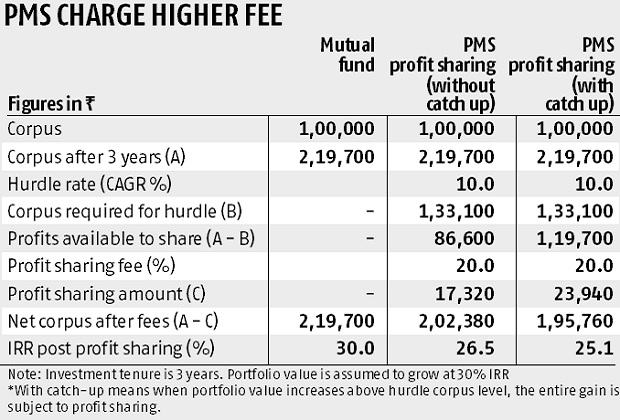Investment Advisory
Investment Advisory
The number of investors in Portfolio Management Schemes (PMS) has been increasing steadily. According to the Securities and Exchange Board of India’s (Sebi) website, the number of discretionary PMS investors have gone up from 39,306 in January, 2015 to 65,745 in December, 2016 — an increase of 67 per cent in the number of PMS investors getting added.
But it continues to be an enigma for many investors. Some think that it is a proxy for mutual funds (MFs). As the bull cycle matures, they believe the select stock-picked portfolios would do well. Some believe due to concentration, PMS portfolios are better than MFs, given their need to diversify over 40-70 stocks to manage higher scale of fund size. And of course, many would like to ape PMS managers and selectively invest themselves more in few of the opportunities.
Popularity rising: In the current cycle, most investors started increasing their equity asset allocation gradually in 2014-15. While the journey started with allocating through the existing MF route, in the quest of adding to equity allocation, wealth/relationship managers have been inducing them to invest in new products being showcased on a continual basis. As new fund offers in MFs have dried up, most wealth managers have been busy in selling PMS and alternative investment funds (AIF) products to investors. Since these new products have a finite launch period, the investors are naturally forced into making decisions rather quickly.
Over the last few years, PMS as a product offering has returned to life and is in vogue now. As the moolah in selling MFs waned due to the market regulator Sebi’s diktat (entry loads were not allowed to be charged and upfronting on fixed management fees was stalled), wealth managers had to shift to other richer products where upfronting of fees are possible. Like any product selling, the PMS management outfits tend to share management fees with the wealth management companies. Most PMS portfolios have gained significantly through their differentiated exposures in small and mid-cap stocks, which have significantly outperformed the markets. While the returns were a function of how the stock market was placed in 2013, with relatively wide discount prevailing in small and mid-cap stocks as compared to large-cap indices, most PMS managers flaunt returns from 2013 to seek fresh inflows from budding investors. Expectations of linearity in portfolio returns are naturally being built. However, the fact remains, the small- and mid-cap space has become expensive. Getting a repeat of such 3-year performance, going forward, looks highly unlikely and a longer wait for such returns is in the offing.
Different focus than MFs: PMS/AIFs also target the voids which are not addressed by MFs. When the market capitalisation of a theme/sector is not very large or a cyclical theme/sectoral opportunity needs to be captured, PMS/AIF is used to address these investment opportunities in a focussed way. In the last bull phase, MFs had floated a number of sectoral and thematic funds which were rationalised in 2011-13. With restrictions of MFs launching new fund schemes, PMS teams within the asset management companies have been focussed on differentiated strategies targeting sectors and themes which have finite shelf life.
Choose cost structure carefully: There are two fee structures — fixed fee and fixed plus variable. Very few isolated PMS providers charge only variable fee structure with negligible fixed fee structure. The investors follow a paradoxical selection path, while choosing between these fee structures. At the start of the bull phases, investors tend to choose profit sharing fees, since the rear-view shows that equities haven’t generated much return in the past. The investor is amenable easily to profit sharing then, since he believes it is difficult to make returns (while the probability to make returns is higher given the low valuations). The investor should be actually selecting a lower fixed fee portfolio.
As the bull market progresses and valuations start to get richer, the rear-view approach of the investor shows precedence of high returns. The investor then opts for a higher fixed fee structure with no profit sharing since he believes in capping the fees to be paid. However, profit sharing fee structure with a lower fixed fee needs to be opted for since making returns start to become harder.
The other issue is that investors tend to be tight fisted in terms of cost optimisation with a sharp eye on costs of fund management during bearish phases and lenient in bullish phases. While the equity returns are a function of the market trajectory, cost optimisation is the only tool in the hands of the investor.

PMS more complicated: For generating the same internal rate of return (IRR), say 30 per cent in three years, mutual funds work out to be cheaper due to the fees. While mutual fund charges 2 per cent, PMS charges can be 7.8-10 per cent with profit sharing, which lowers the returns by almost 5 per cent.
PMS products are costlier than MFs due to the profit sharing fees. Thanks to profit sharing fees, the PMS Manager has to outperform MFs by 4-4.60 per cent (as can been seen in the profit sharing fee examples in the table) to be at par with MF returns in the hands of the investor. This naturally entails, taking higher risk to achieve such outperformance. Higher risks does not necessarily translate into higher returns. PMS portfolios do not get benchmarked compared to MFs on post-profit sharing fees. In the case of such superior returns generated by the PMS/AIF Manager, the benefit overflow to the investor remains minimal. Given such a case, with no incremental benefits flowing to investors, it defies logic to invest in PMS/AIFs over MFs. Given the upfront fee sharing arrangement, wealth managers have enough incentives to promote PMS/AIFs. To worsen things, exit loads have been imposed on portfolios, which ensures investors remain invested in PMS for at-least three years ensuring fixed management fees, which can be shared with wealth managers, beyond the profit sharing fees. Unlike MFs, the portfolio costs in PMS remains an unknown with profit-sharing fees getting crystallised at the end of tenor of the product
MFs a better option: Overall, MFs seem to be an easy path to equity investing. PMS and AIF portfolio strategies could be induced excitement value by the wealth managers, but in terms of performance, it looks to be a tall task to beat MFs by a large margin to justify their higher fee structure. For investors, it pays to be simple with flexibility and have an access liquidity at any given point in time. PMS comes with liquidity constraints, has higher costs and doesn’t offer any incremental benefit. It, therefore, makes sense for investors to stick to MFs.
Background: A successful entrepreneur brought Entrust on board after global private banks fell short of expectations in managing a complex overseas investment structure. Challenge: The client, a resident Indian, had established a foreign company for investments. Initially, we were engaged purely to manage the portfolio. However, it became evident early on that this was not […]
Background: This client inherited a significant corpus and approached Entrust for investment advisory services. We designed a risk-aligned, staggered portfolio rollout. Challenge: At the onset of COVID-19, the client experienced deep anxiety and considered liquidating his portfolio entirely in favor of fixed deposits. It was clear he needed more than investment advice—he needed consistent support […]
Background: The client, a prominent creative entrepreneur, approached Entrust with apprehension. At the time, 90% of her investment portfolio was managed by other wealth firms. Her engagement with us began with a healthy skepticism about our role and the value we could bring. Challenge: Our mandate spanned investments, bookkeeping, real estate, legal, and concierge services. […]
signup for updates
